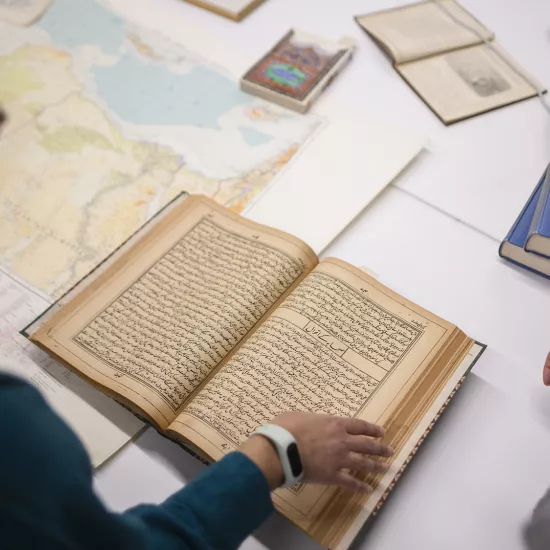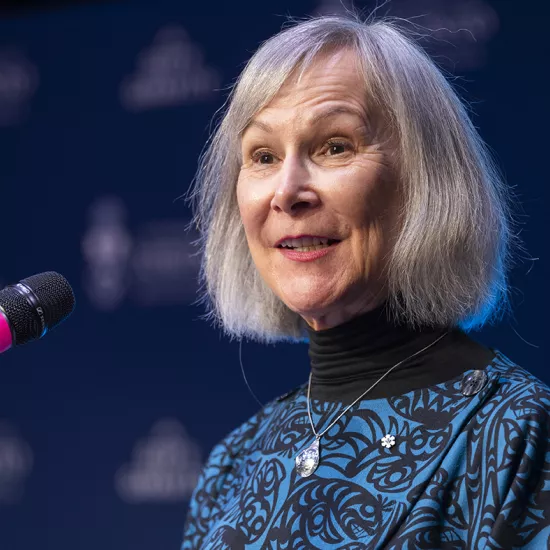UTM neuroanatomy course taking a personal approach to illustrating the brain

A medical illustrator may well be asked to create illustrations of the brain over the course of their career. But it’s rare that the assignment gets so personal.
Until this year, students in the Master of Science in Biomedical Communications program created original but standard illustrations of brains, in whole or in section. The illustrations were created as part of what was then a first-year Neuroanatomy for Visual Communication course.
"When Neuro was a first-year course, the first assignment was just a very straightforward illustration of the brain in isolation," says Shelley Wall, associate professor at the University of Toronto.
Rescheduling the course Neuroanatomy for Visual Communication from first-year curriculum to second-year gave Wall, the course instructor, the opportunity to challenge the design and rendering skills of the graduate students.
Innovating course content
"In first year, students are still finding their way in anatomical illustration. Now that Neuro is a second-year graduate course, I could take it to the next level because the students' skills are so much more developed. So I conceived the neuro self-portrait assignment," Wall says.
In Neuroanatomy, students learn the structure and function of the brain and the cranial nerves. They engage in interactive exercises, examine brain specimens and skulls, study historical and contemporary texts, and watch videos of dissections.
"Drawing the brain is one thing. You must make it accurate. But what makes this assignment so different is that you really must understand all the important relationships between the brain, the brain case, and the external features of the head. And making the assignment a self-portrait is a way of making it also a completely unique illustration that really puts the students’ stamp on it and allows them some creativity," she says.

Even working within the constraints of the course assignment, and the strict parameters of depicting the brain with accuracy, the second-year graduate students delivered a broad range of unique and original illustrations.
Mimi Yuejun Guo used two different traditional mediums and then digitally composited them to create her self-portrait.
"I used carbon dust to create a black-and-white self-portrait with less saturation and colour to not compete with the brain illustration. I used acrylic paint for its vibrant colours and to highlight the brain," says Guo.
Wall says that Guo added a whole new layer of complexity to the assignment by portraying the brain from an upward angle, and at a three-quarter view.
"I chose this perspective to show all the crucial anatomical parts–the cerebral hemisphere, the cerebellum, the brainstem and the origins of the cranial nerves," says Guo.

One student in Wall’s course had his own father's unique brain imaging data to work with.
In 2020, Shehryar Saharan’s father was diagnosed with a pituitary tumour. As a patient, his father received copies of his MRI brain scans.
"Before my father's surgery in 2021, I tried to help him understand his condition better. I was shocked by the lack of high-quality visuals available to explain the tumour in relation to the optic nerve and the rest of the brain. When this neuro assignment was introduced, it became the best excuse to help fill this void and create a neuroanatomy visualisation that would explain my dad's condition in a meaningful and simplified way," says Saharan.
Saharan asked his father to pose for the portrait and he used his father's brain scans plus many other references to illustrate the brain and the tumour.
Saharan says that his father, whose surgery was a success, loves his neuro portrait. "After my dad saw the finished piece, he was better able to understand what he had gone through. He said he wished that he had had it earlier."

Sana Khan’s brother posed for her portrait, which Khan created in a style that references the nineteenth-century anatomical atlas Traité complet de l'anatomy de l'homme written by Jean-Baptiste Marc Bourgery, and illustrated by Nicolas Henri Jacob.
"Rather than “ghost” the brain over the portrait, I wanted my illustration to look in vivo – as if you could pull back flaps of skin and tissue to see the brain within," says Khan. The homage to Bourgery’s canonical text also adds a touch of whimsy to the illustration, Wall says. “I like to think that this assignment not only challenges the students, but let’s them have some artistic fun as well.”
Wall says that the innovative neuro self-portrait assignment is, for medical illustrators, the perfect intersection of complexity and accuracy, and creativity and originality.
View more neuro portraits and self-portraits on the MScBMC Instagram account:



